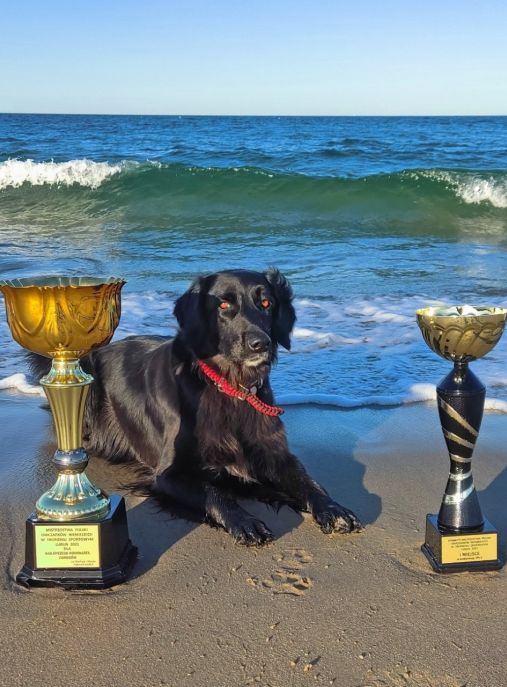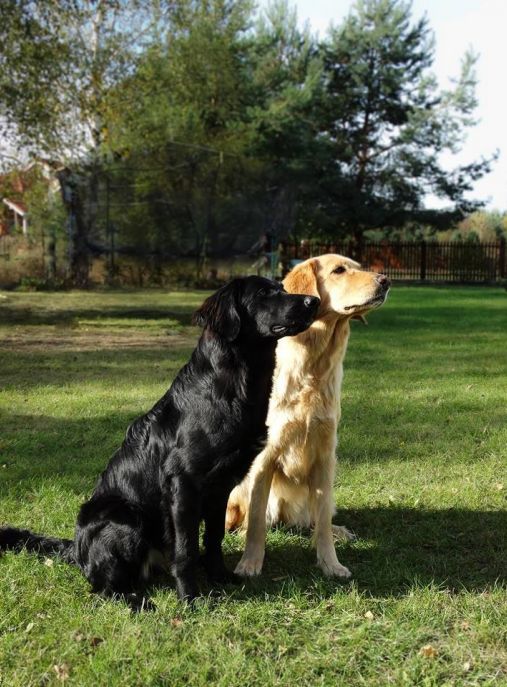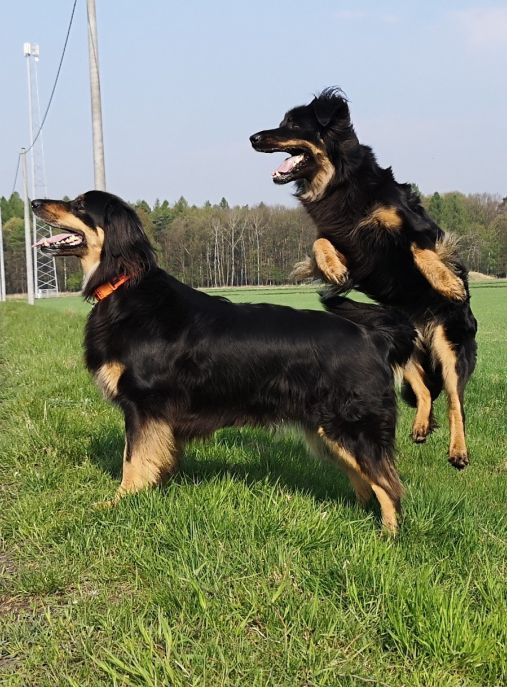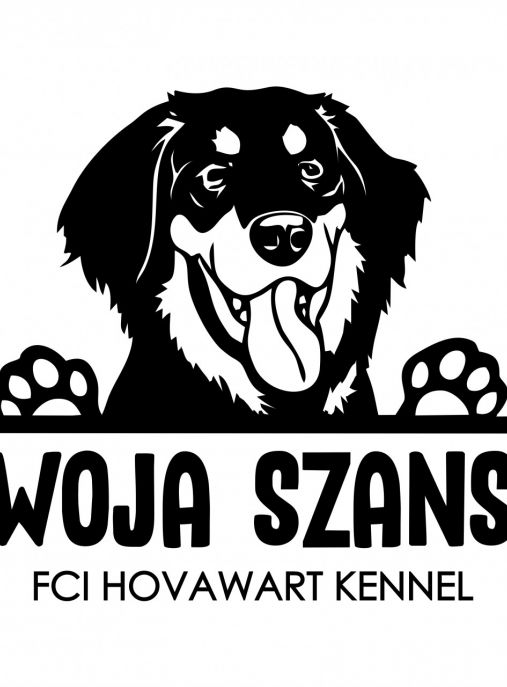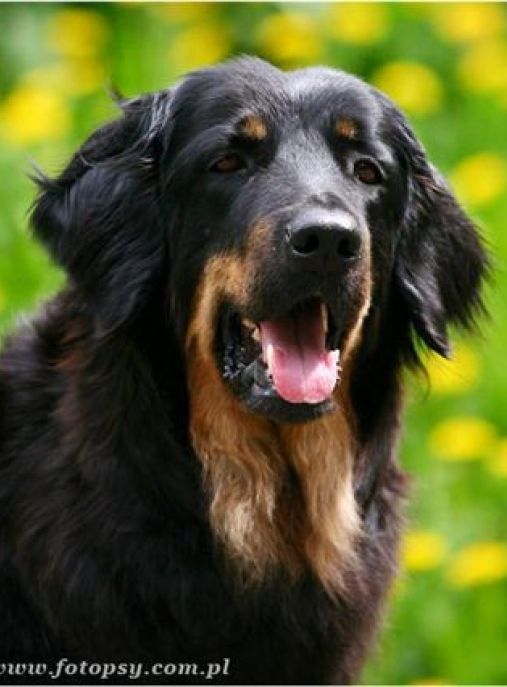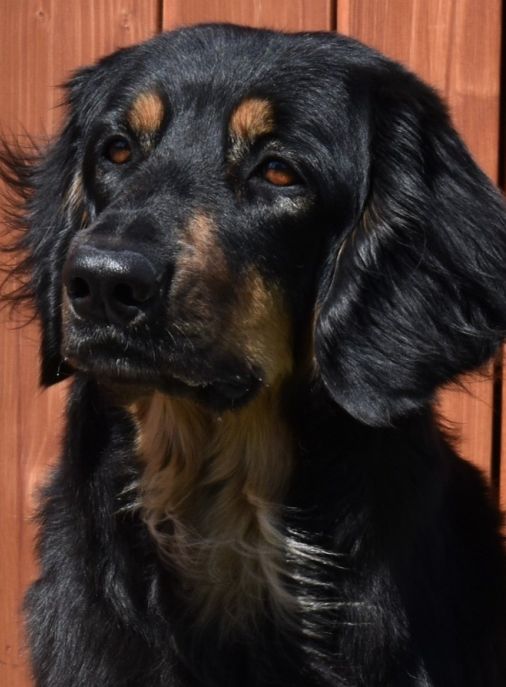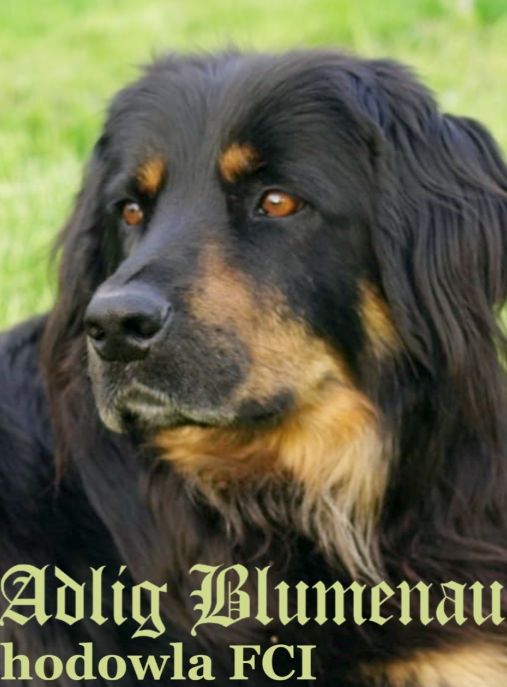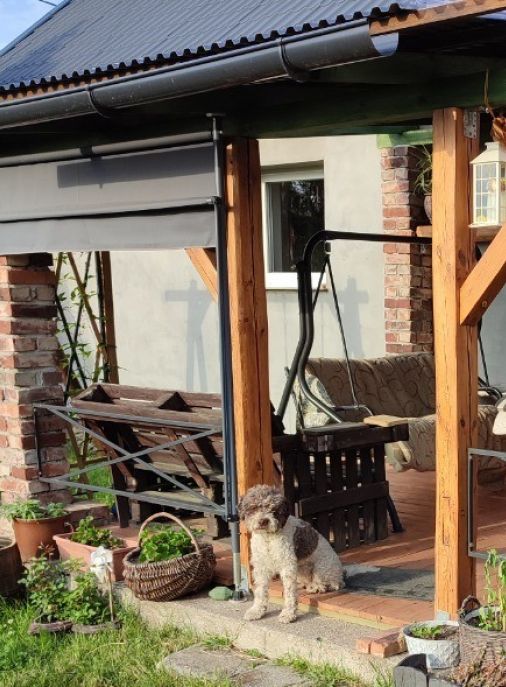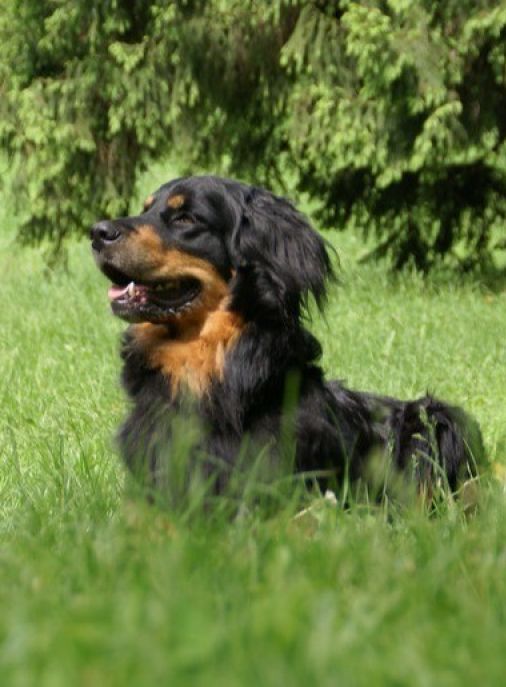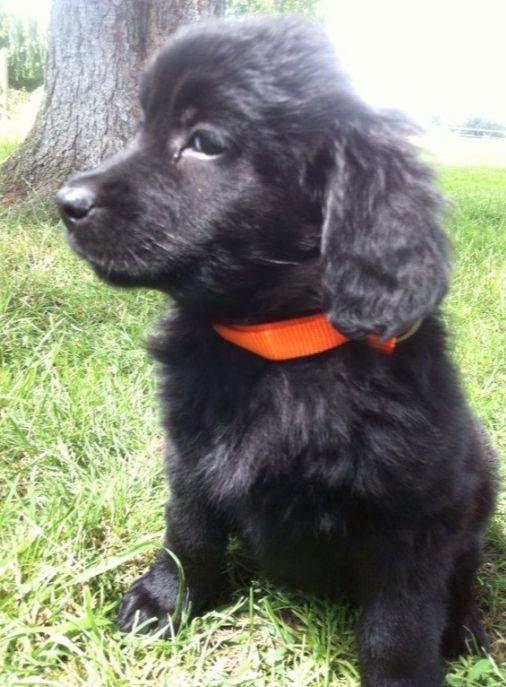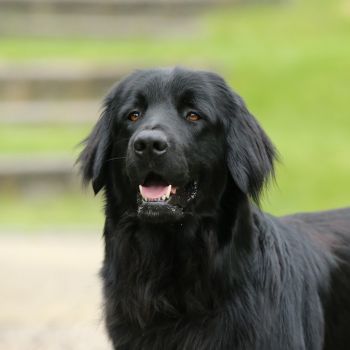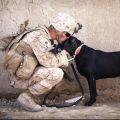The Hovawart is a versatile and intelligent dog breed that originated in Germany. With its striking appearance and exceptional working abilities, the Hovawart has gained popularity as a loyal companion, a reliable working dog, and a devoted family pet. This breed is known for its strong protective instincts, making it an excellent choice for guarding and protection tasks. In this text, we will delve into the history, characteristics, and interesting facts about the Hovawart breed.
The history of the Hovawart dates back to the Middle Ages, where it was primarily used as a guardian and herding dog. The name "Hovawart" is derived from the Middle High German words "hova" (court) and "wart" (guardian), reflecting its original purpose. These dogs were commonly found in the courts of nobles and were responsible for protecting the estates and livestock.
During the 19th century, the Hovawart breed faced a decline in numbers due to the increasing popularity of other breeds. However, thanks to the efforts of dedicated breed enthusiasts, the Hovawart was revived and reestablished. The breed was officially recognized by the Fédération Cynologique Internationale (FCI) in 1937.
According to the FCI typology, the Hovawart belongs to Group 2: Pinscher and Schnauzer - Molossoid breeds - Swiss Mountain and Cattle Dogs. This group includes breeds that are known for their guarding and herding abilities. The Hovawart's classification within this group highlights its natural instincts and working capabilities.
Hovawarts are versatile dogs that excel in various roles. They are often employed as search and rescue dogs, police dogs, and therapy dogs. Their intelligence, trainability, and loyalty make them suitable for a wide range of tasks. Additionally, Hovawarts are cherished family pets due to their affectionate nature and their ability to form strong bonds with their owners.
In terms of physical characteristics, the Hovawart is a large and powerful breed. Males typically weigh between 66 to 88 pounds (30 to 40 kilograms), while females weigh slightly less, ranging from 55 to 77 pounds (25 to 35 kilograms). The height at the withers for males is around 25 to 28 inches (63 to 70 centimeters), and for females, it is slightly smaller, ranging from 23 to 26 inches (58 to 65 centimeters).
The Hovawart has a distinct appearance with a well-muscled body and a noble expression. Its head is proportionate to its body, with a broad skull and a well-defined stop. The eyes are medium-sized and dark, reflecting the breed's alertness and intelligence. The ears are set high and hang close to the head, giving the Hovawart an attentive and focused appearance. The breed's coat is long and dense, providing protection from various weather conditions. The color of the coat can vary, with black, blond, and black and tan being the most common.
In terms of temperament, the Hovawart is known for its loyalty, courage, and protective instincts. These dogs are naturally wary of strangers, making them excellent guard dogs. However, with proper socialization and training, they can also be friendly and sociable with familiar people. Hovawarts are known to be gentle and patient with children, making them suitable for families. They are highly trainable and eager to please their owners, but they require consistent and firm guidance to reach their full potential.
The average lifespan of a Hovawart is around 10 to 14 years, which is relatively long for a large breed. However, like any other breed, they may be prone to certain health issues. Some common health concerns for Hovawarts include hip dysplasia, elbow dysplasia, and certain eye conditions. Regular veterinary check-ups, a balanced diet, and regular exercise can help maintain their overall health and well-being.
In conclusion, the Hovawart is a remarkable breed with a rich history and exceptional characteristics. With its versatility, intelligence, and protective instincts, the Hovawart excels in various roles, from working dogs to loyal family companions. Their striking appearance, coupled with their loyal and affectionate nature, makes them a popular choice for dog enthusiasts worldwide. Whether as a guardian, a working dog, or a beloved family pet, the Hovawart continues to leave a lasting impression with its remarkable qualities.
The Hovawart is a remarkable breed of dog known for its exceptional character and versatile nature. With a history dating back to medieval times, these dogs were originally bred in Germany for guarding and protecting properties. Today, they are cherished as loyal family companions, search and rescue dogs, and even therapy dogs. The Hovawart's character is a unique blend of intelligence, loyalty, and independence, making them a fascinating breed to raise and train.
One of the defining characteristics of the Hovawart is their unwavering loyalty to their family. They form deep bonds with their owners and are known to be highly protective. This loyalty extends to all family members, including children, making them excellent family pets. However, their protective nature also means that they can be wary of strangers, making early socialization crucial.
Despite their protective instincts, Hovawarts are not aggressive by nature. They are generally calm and composed, but when faced with a threat, they can quickly switch into a protective mode. This makes them excellent watchdogs, as they have a keen sense of awareness and will alert their owners to any potential danger.
Hovawarts are highly intelligent dogs, which can sometimes lead to a sense of independence. They are known to be problem solvers and can quickly figure out solutions to challenges they encounter. This intelligence also means that they require mental stimulation to prevent boredom and destructive behavior. Engaging them in activities such as puzzle toys, obedience training, and agility exercises can help keep their minds sharp and focused.
When it comes to training, Hovawarts respond best to positive reinforcement methods. They are sensitive dogs and do not respond well to harsh or forceful training techniques. Patience, consistency, and rewards-based training methods are key to successfully training a Hovawart. They are eager to please their owners and thrive on praise and treats.
Early socialization is crucial for Hovawarts to ensure they grow up to be well-rounded dogs. Exposing them to various people, animals, and environments from a young age will help them develop into confident and well-behaved adults. It is also important to provide them with regular exercise to keep them physically and mentally stimulated. Long walks, hikes, and playtime in a secure area are all excellent ways to meet their exercise needs.
In conclusion, the Hovawart is a remarkable breed with a character that is both loyal and independent. They are intelligent, protective, and make excellent family pets when properly trained and socialized. With their versatile nature, they excel in various roles, from being a loving companion to a search and rescue dog. If you are looking for a devoted and intelligent breed that will bring joy and companionship to your life, the Hovawart may be the perfect choice.
The Hovawart is a versatile and intelligent breed that requires proper care to thrive. Here is an extensive description of the recommended care for Hovawart dogs, along with tips on what to do and what not to do when caring for dogs of this breed.
1. Exercise: Hovawarts are active dogs that require regular exercise to maintain their physical and mental well-being. Aim for at least one hour of exercise daily, including walks, runs, and playtime in a secure, fenced area. Engage them in mentally stimulating activities like obedience training, agility, or scent work to keep their minds sharp.
2. Mental Stimulation: Hovawarts are highly intelligent and need mental stimulation to prevent boredom and destructive behavior. Provide puzzle toys, interactive games, and training sessions to challenge their minds. Engaging them in new experiences and environments will also help prevent them from becoming anxious or fearful.
3. Socialization: Early and ongoing socialization is crucial for Hovawarts. Expose them to various people, animals, and environments from a young age to ensure they grow up to be well-rounded and confident dogs. Enroll them in puppy classes and organize playdates with other friendly dogs to promote positive social interactions.
4. Training: Hovawarts are eager to please and respond well to positive reinforcement training methods. Use rewards like treats, praise, and play to motivate them. Consistency, patience, and firmness are key when training this breed. Focus on basic obedience commands, leash manners, and recall training to ensure they are well-behaved and obedient.
5. Grooming: Hovawarts have a medium-length, dense double coat that requires regular grooming. Brush them at least once a week to remove loose hair and prevent matting. During shedding seasons, daily brushing may be necessary. Trim their nails regularly, check their ears for signs of infection, and brush their teeth frequently to maintain good oral hygiene.
6. Health Care: Regular veterinary check-ups are essential to monitor the overall health of your Hovawart. Vaccinations, parasite prevention, and dental cleanings should be kept up to date. Hovawarts are generally a healthy breed, but they may be prone to certain conditions like hip dysplasia, elbow dysplasia, and bloat. Be aware of the signs and symptoms of these conditions and seek veterinary care if necessary.
7. Proper Diet: Feed your Hovawart a balanced and nutritious diet that suits their age, size, and activity level. High-quality commercial dog food or a well-balanced homemade diet can be suitable options. Avoid overfeeding and monitor their weight to prevent obesity, which can lead to various health issues. Provide fresh water at all times.
What to do:
- Provide regular exercise and mental stimulation.
- Socialize them extensively from a young age.
- Use positive reinforcement training methods.
- Groom them regularly and maintain good hygiene.
- Schedule regular veterinary check-ups.
- Feed a balanced and appropriate diet.
What not to do:
- Neglect their exercise and mental stimulation needs.
- Isolate them or leave them alone for extended periods.
- Use harsh training methods or punishment.
- Neglect their grooming needs, leading to matting or skin issues.
- Ignore signs of potential health problems.
- Overfeed or feed an unbalanced diet.
Remember, Hovawarts are loyal and loving companions that thrive when given proper care, attention, and training. By following these tips, you can ensure a happy and healthy life for your Hovawart dog.
The Hovawart dog breed is known for its striking and unique coat color, which adds to its overall charm and appeal. The common color of Hovawart dogs is a rich and lustrous black, often described as jet black or coal black. This deep and intense shade of black is one of the defining characteristics of the breed and contributes to its regal and majestic appearance.
The Hovawart's black coat is usually solid and uniform throughout, with no markings or patterns. The color is evenly distributed across the body, including the head, back, sides, and tail. The coat is dense and glossy, reflecting light to create a beautiful sheen that enhances the dog's elegant silhouette.
One of the most captivating aspects of the Hovawart's black coat is its ability to accentuate the dog's muscular build and strong bone structure. The dark color creates a stark contrast against the dog's well-defined body, highlighting its power and athleticism. This contrast is particularly noticeable in sunlight or well-lit environments, where the black coat shines and adds an extra layer of allure to the breed's overall appearance.
In addition to their black coat, Hovawart dogs may also have small patches of white on their chest or toes. These white markings, though minimal, provide a subtle yet eye-catching contrast against the black background. They add a touch of elegance and uniqueness to the dog's appearance, making each Hovawart dog truly one-of-a-kind.
The black coat of the Hovawart is not only aesthetically pleasing but also serves a practical purpose. It provides excellent camouflage, allowing the dog to blend seamlessly into its surroundings, especially in low-light conditions. This natural camouflage was particularly useful in the breed's historical role as a guardian and protector of homes and estates, where the dog's ability to remain inconspicuous was crucial.
To maintain the beauty and health of the Hovawart's black coat, regular grooming is essential. Brushing the coat regularly helps to remove loose hair and prevent matting, while also promoting healthy skin and a shiny appearance. Additionally, occasional baths using high-quality dog shampoos designed for dark coats can help enhance the richness and depth of the black color.
In conclusion, the common color of Hovawart dogs is a stunning and intense black. This black coat, with its glossy sheen and minimal white markings, adds to the breed's overall allure and elegance. It not only enhances the dog's physical appearance but also serves a practical purpose, providing excellent camouflage. The Hovawart's black coat is truly a testament to the breed's beauty and uniqueness.
The Hovawart dog breed is known for its robust health and overall vitality. These dogs are generally considered to be healthy and have a long lifespan, often living up to 12-14 years. However, like any other breed, Hovawarts are prone to certain health issues that owners should be aware of to ensure their well-being.
One of the most common health concerns in Hovawarts is hip dysplasia. This condition occurs when the hip joint doesn't develop properly, leading to arthritis and mobility issues. Regular exercise, a balanced diet, and maintaining a healthy weight can help reduce the risk of hip dysplasia. Additionally, responsible breeders often screen their breeding dogs for this condition to minimize its occurrence in the breed.
Another health issue that Hovawarts may face is elbow dysplasia. Similar to hip dysplasia, this condition affects the elbow joint and can cause lameness and discomfort. Regular veterinary check-ups and appropriate exercise can help detect and manage elbow dysplasia.
Hovawarts are also prone to certain eye problems, including progressive retinal atrophy (PRA) and cataracts. PRA is a degenerative condition that leads to vision loss, while cataracts cause clouding of the lens. Regular eye examinations by a veterinary ophthalmologist can help detect these issues early on, allowing for appropriate treatment or management.
Like many large breeds, Hovawarts may also be susceptible to bloat, also known as gastric dilatation-volvulus (GDV). This is a life-threatening condition where the stomach twists, leading to a blockage of blood flow and potential organ damage. Feeding smaller, frequent meals, avoiding exercise immediately after meals, and using elevated feeding bowls can help reduce the risk of bloat.
To maintain the overall health of Hovawarts, regular veterinary check-ups are essential. Vaccinations, parasite prevention, and dental care should be part of their routine healthcare. A balanced diet that meets their nutritional needs, including high-quality dog food, is crucial for their well-being. Regular exercise is also important to keep them physically and mentally stimulated.
Grooming plays a significant role in Hovawart health. Their thick double coat requires regular brushing to prevent matting and to remove loose hair. This helps maintain healthy skin and coat condition. Regular nail trims, ear cleaning, and dental care should also be part of their grooming routine.
Lastly, socialization and mental stimulation are vital for the overall health and well-being of Hovawarts. These intelligent dogs thrive on mental challenges and enjoy activities such as obedience training, agility, and interactive games. Providing them with a stimulating environment and plenty of opportunities for exercise and playtime will contribute to their overall happiness and health.
In conclusion, while Hovawarts are generally healthy dogs, they can be prone to certain health issues such as hip dysplasia, elbow dysplasia, eye problems, and bloat. Regular veterinary care, a balanced diet, exercise, grooming, and socialization are key to ensuring the health and well-being of these wonderful dogs. With proper care and attention, Hovawarts can lead long, happy, and healthy lives as beloved family pets.
The Hovawart is a large and robust breed of dog that requires a well-balanced and nutritious diet to maintain optimal health and vitality. Proper nutrition plays a crucial role in supporting their overall well-being, including their immune system, bone and muscle development, and energy levels. In this text, we will delve into the specific nutritional needs of Hovawart dogs, offering advice on what and how to feed them, as well as highlighting foods to avoid.
Protein is an essential component of a Hovawart's diet, as it aids in muscle development and repair. High-quality animal-based proteins such as chicken, turkey, beef, and fish should form the foundation of their meals. These proteins provide the necessary amino acids for healthy growth and maintenance. It is recommended to feed adult Hovawarts a diet consisting of around 18-25% protein, while puppies require a slightly higher percentage to support their rapid growth.
Fats are another crucial element of a Hovawart's diet, providing them with a concentrated source of energy. Healthy fats, such as those found in fish oil, flaxseed oil, and chicken fat, are beneficial for their skin and coat health, as well as supporting brain function. It is important to ensure a balance between omega-3 and omega-6 fatty acids, as this promotes a healthy inflammatory response and overall well-being.
Carbohydrates should be included in moderate amounts in a Hovawart's diet. Opt for complex carbohydrates like whole grains (brown rice, oats) and vegetables (sweet potatoes, peas, carrots) rather than simple carbohydrates like white rice or wheat flour. Complex carbohydrates provide a steady release of energy, while also offering essential vitamins, minerals, and fiber.
Fruits and vegetables are excellent additions to a Hovawart's diet, as they provide essential vitamins, minerals, and antioxidants. Blueberries, spinach, pumpkin, and apples are great choices. However, it is important to remember that some fruits, such as grapes and raisins, can be toxic to dogs and should be avoided.
Feeding guidelines for Hovawarts can vary depending on their age, weight, activity level, and overall health. It is recommended to consult with a veterinarian to determine the appropriate portion sizes and feeding frequency for your specific dog. Generally, adult Hovawarts should be fed twice a day, while puppies may require three to four meals a day to support their growth.
While providing a nutritious diet is essential, it is equally important to avoid certain foods that can be harmful to Hovawarts. Some common foods to avoid include chocolate, caffeine, onions, garlic, avocados, grapes, raisins, and foods high in salt or sugar. These can cause various health issues ranging from gastrointestinal upset to organ damage.
Additionally, it is crucial to avoid overfeeding Hovawarts, as they have a tendency to gain weight easily. Obesity can lead to a range of health problems, including joint issues, heart disease, and reduced lifespan. Regular exercise and portion control are key to maintaining a healthy weight for your Hovawart.
In conclusion, providing a well-balanced and nutritious diet is vital for the overall health and well-being of Hovawart dogs. A diet rich in high-quality proteins, healthy fats, complex carbohydrates, fruits, and vegetables will support their growth, energy levels, and immune system. Remember to consult with a veterinarian to determine the specific dietary needs of your Hovawart, and avoid feeding them foods that can be harmful. By prioritizing their nutrition, you can ensure that your Hovawart lives a long, healthy, and happy life.
